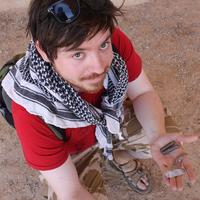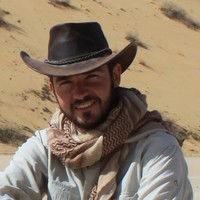
Huw Groucutt
Related Authors
Marco A Bernal
University of Oxford
Christopher Stimpson
Queen's University Belfast
Michael Petraglia
Griffith University
Ash Parton
University of Oxford
Ceri Shipton
University College London
Abdullah M Alsharekh
King Saud University
Paul S Breeze
King's College London
Eleanor Scerri
Max Planck Institute for the Science of Human History
Marine Frouin
SUNY: Stony Brook University
James Blinkhorn
Max Planck Institute for the Science of Human History
InterestsView All (27)









Uploads
Papers by Huw Groucutt
importance for resolving some of the major debates in hominin evolutionary studies. Though there has been
an acceleration in the rate of fieldwork and discovery of archaeological sites in recent years, little is known
about hominin occupations in the Pleistocene over vast areas of Arabia. Here we report on the
identification of five new Middle Palaeolithic sites from the Nejd of central Arabia and the southern
margins of the Nefud Desert to the north. The importance of these sites centers on their diversity in terms
of landscape positions, raw materials used for lithic manufacture, and core reduction methods. Our
findings indicate multiple hominin dispersals into Arabia and complex subsequent patterns of behavior
and demography.
importance for resolving some of the major debates in hominin evolutionary studies. Though there has been
an acceleration in the rate of fieldwork and discovery of archaeological sites in recent years, little is known
about hominin occupations in the Pleistocene over vast areas of Arabia. Here we report on the
identification of five new Middle Palaeolithic sites from the Nejd of central Arabia and the southern
margins of the Nefud Desert to the north. The importance of these sites centers on their diversity in terms
of landscape positions, raw materials used for lithic manufacture, and core reduction methods. Our
findings indicate multiple hominin dispersals into Arabia and complex subsequent patterns of behavior
and demography.
in Africa (CoMSAfrica)” aimed to reflect upon a common and replicable analytical framework, as well as proposing concrete solutions for
its implementation. It builds on previous efforts to standardize panAfrican comparisons which focused on higher taxonomic entities specific categories of stone artifacts, or individual regions. Organized
by C. Tryon and M. Will, the workshop brought together 12 international
scholars (see author list) working in different periods and regions of
Africa, with varied methodological backgrounds. The workshop was held
between November 5th and 6th 2018 at Harvard University (USA),
and funded through the Accelerator Workshop Program of the
Radcliffe Institute for Advanced Study (https://projects.iq.harvard.
edu/comsafrica). The meeting included short introductory presentations
by all participants followed by a series of more focused roundtable discussions to define the main problems and issues confronting comparative lithic analyses of African MSA assemblages. The final goal was the development of a unified analytical approach. As a two-day workshop was obviously insufficient to solve problems of such magnitude, the final discussion focused on outlining a working model and roadmap for future meetings and collaborations through the CoMSAfrica network.